Seeing the title, you might wonder: Are there beasts in the Palace Museum? Of course! We’ve previously introduced the “Inner Guards”—police dogs and the palace cats left behind by ancient residents. Just last year, even a few charming spotted deer visited with the tourists. But today’s “beasts” are a bit different. With mysterious origins, they mostly go unnoticed. Yet, if you look closely, you’ll find them hiding in various corners of the Forbidden City. Come, let’s look for these fantastic beasts together!
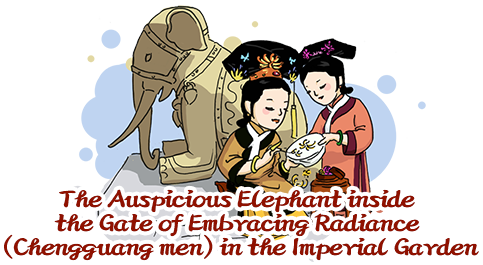
The elephant, the largest land animal, is gentle, serene, and dignified. In ancient times, it was revered as the “most virtuous of beasts” and a symbol of wealth and status.
A pair of kneeling elephants can be seen inside the Gate of Embracing Radiance in the Imperial Garden. Are they kneeling as punishment? Not at all! The pose is a play on words, as the phrase for “kneeling elephant” (kneeling—fugui, 富贵; elephant—jixiang, 吉祥) sounds like “prosperity and fortune” in Chinese.
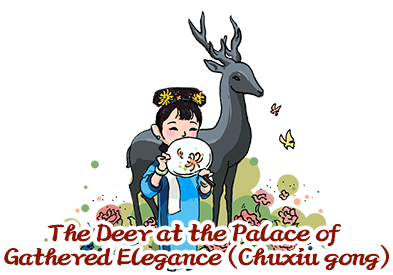

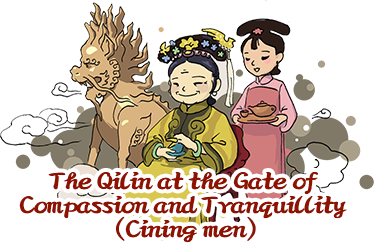
The qilin? Is that the mythical beast with the body of a deer, a horn on its head, scales covering its body, and a tail like that of an ox? Exactly! In Chinese mythology, the qilin resembles many different creatures—an amalgamation of traits of various beloved animals.
In front of the Gate of Compassion and Tranquillity stands a pair of gilded qilin, proudly guarding the path. With raised scales and hair, focused gazes, and upright posture, they exude an aura of majesty. The Palace of Compassion and Tranquillity (Cining gong) was a retreat for the empress dowager and imperial consorts of a deceased emperor in their later years. The qilin were placed here to wish peace and harmony upon the residents. This arrangement reflects the emperor's virtue of respecting and caring for the elderly.
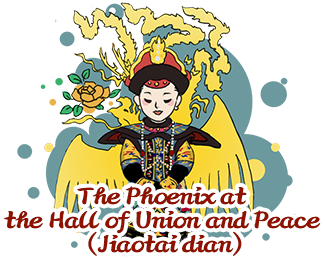
The phoenix, the noble and unsullied “queen of birds”, drinks only morning dew, eats only bamboo fruits, and perches only on thousand-year-old parasol trees. Across dynasties, the phoenix has represented the highest grace, reserved as a symbol for women, just as the dragon represents men.
The Hall of Union and Peace is where the empress celebrated her birthday, so the beams here are painted with vibrant phoenix designs.
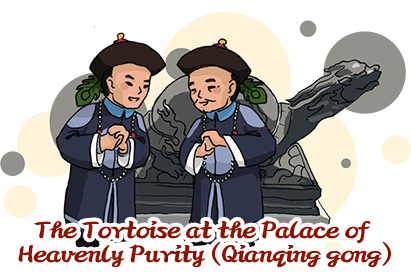
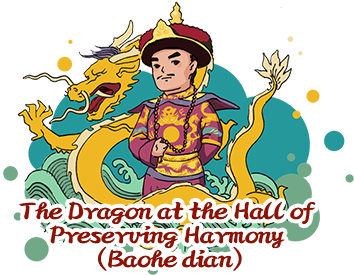
Chinese people often say they are the "descendants of the dragon". In Chinese mythology, the dragon is a divine creature that controls clouds and rain, symbolising the spirit of the Chinese nation.
For thousands of years, feudal emperors used the dragon as a symbol of power and dignity. The emperor was known as the "True Dragon Descending from Heaven" (Zhenlong tianzi), and anything associated with him bore the word "dragon", such as "dragon countenance" (his majesty’s face) and "dragon robe" (the imperial robe).
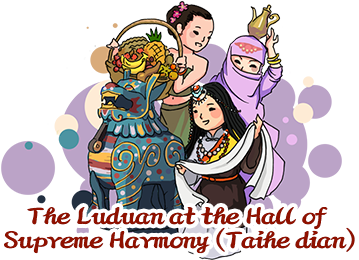
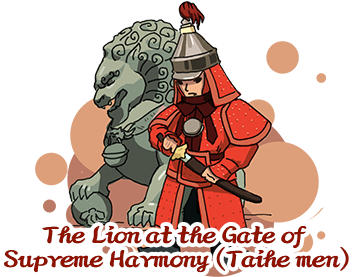
The lion is a real animal, symbolising imperial power as well as sacredness and good fortune.
Guarding the Gate of Supreme Harmony, the central site of political life in the Forbidden City, are a pair of bronze lions—one male and one female, with bells hanging from their necks, muscular builds, and a majestic presence. The male lion steps on an embroidered ball, while a cub playfully rests beneath the female lion's paw, symbolising protection, warding off evil, auspicious blessings, and serving as decoration. The Forbidden City contains seven pairs of such lions; see if you can spot them all!